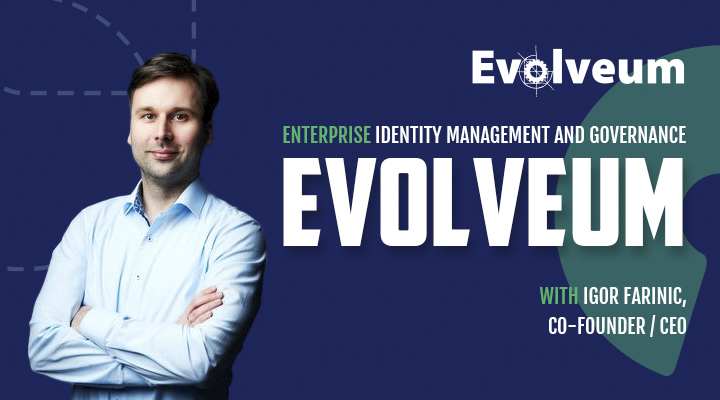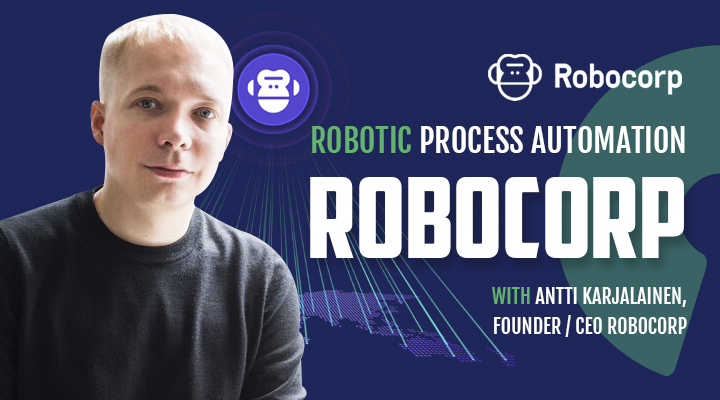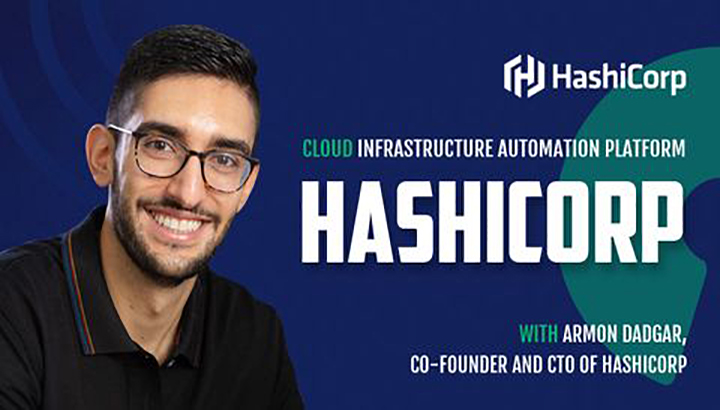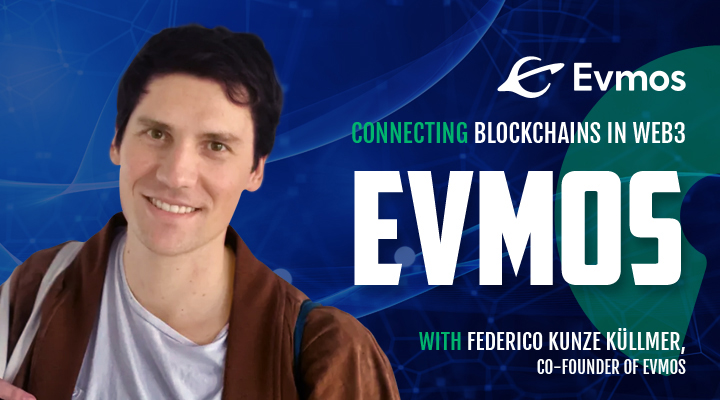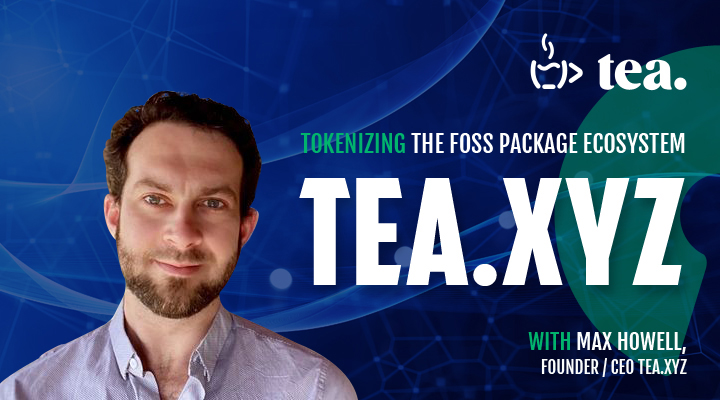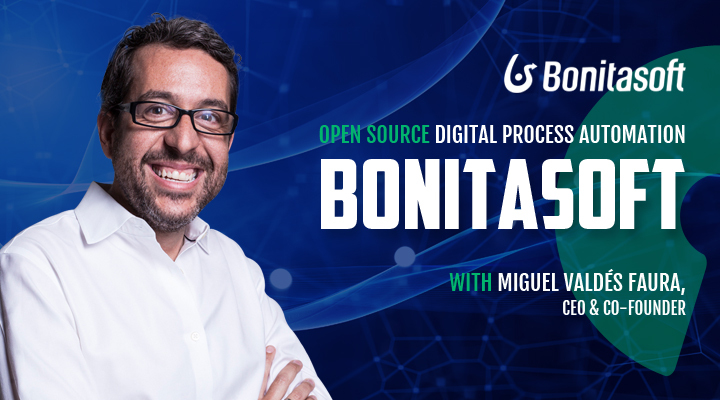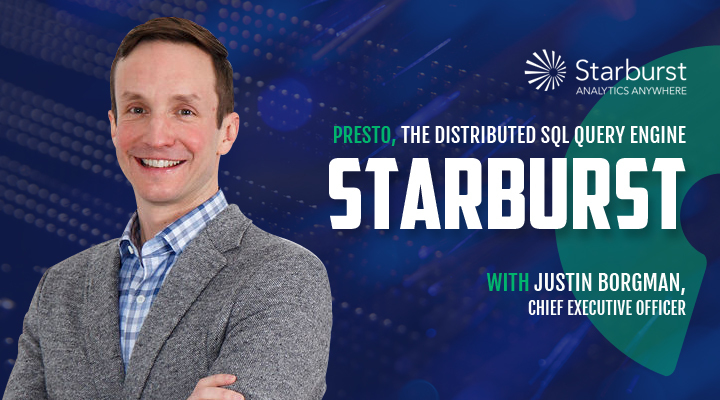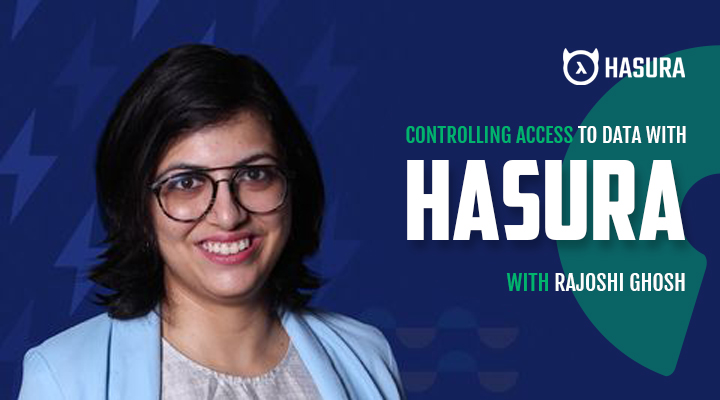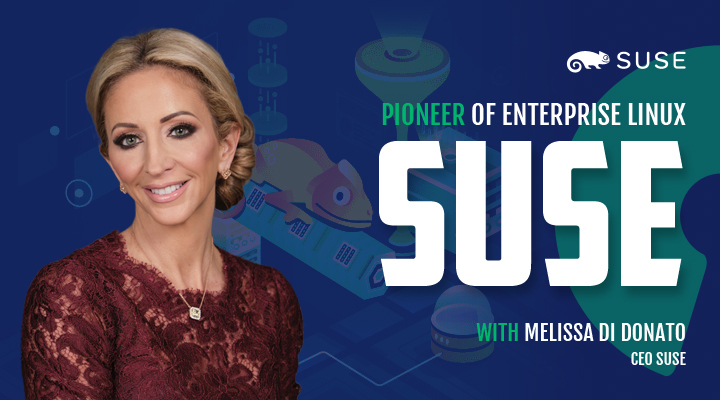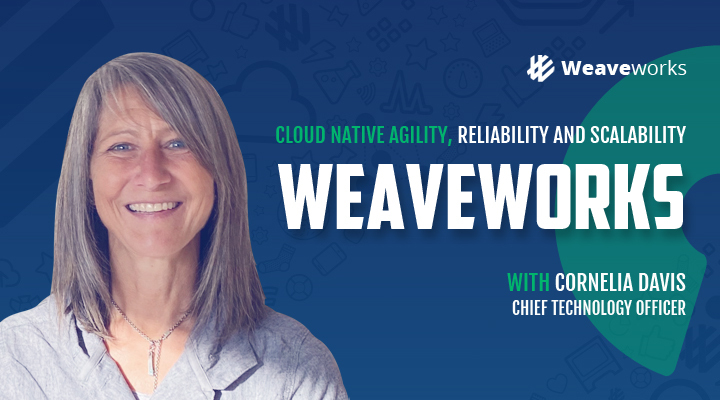Intro
Michael: Hello and welcome to Open Source Underdogs. I’m your host Mike Schwartz, and this is episode 58, an interview with Armon Dadgar, Co-Founder and CTO of HashiCorp, the company behind the Uber successful open-source projects Terraform and Vault.
In addition to writing one of the pillars of cloud infrastructure with over 100 million downloads, HashiCorp IPO-ed in December of 2021, with over 250 million in trailing 12-months revenue.
So, without further ado, let’s just cut to the interview with Armon, and let him tell you about how HashiCorp built this amazing business. Armon, thank you so much for joining the podcast today.
Armon: Yeah. Thank you, Mike, pleasure to be here.
Common Theme Of Products
Michael: HashiCorp has a number of great products, and we could probably fill three thirty-minute podcasts just talking about Terraform, Vault and Consul, but at a high level, what’s a common theme of business problems that these products solve and how do they fit together?
Armon: All of them are coming motivated ultimately by the same problem, which is, how do we actually build modern applications in a cloud environment. It sounds like a simple statement, but once you double-click into that, there’s a reason we have so many products. It’s really looking at, “Hey, if we think about what it means to build a modern cloud application, we want it to be automated in the delivery end-to-end, and we want to bake in security-by-default. We’re sort of changing our application architectures to be much more sort of microservice or smaller units rather than they become monolithic applications.
And so, once you sort of bring all those requirements and you end up with a whole bunch of challenges around, how do I provision that infrastructure, how do I secure it, how do I connect it all together, how do I deploy and manage the runtime of those applications. So, collectively, that ends up being the focus of our broader portfolio.
What Is Commercial?
Michael: I was reading the S-1, there’s a great sentence that describes open-core where it says, “We sell proprietary commercial software that builds on our open-source products with additional enterprise capabilities.” What are some of the examples of those enterprise capabilities?
Armon: Sure. I’ll just pick one product to make it a little bit easier. If we’re talking about our Vault product, as an example, you know, the open-source version really designed around kind of a single-data center, single-deployment use case, if we look at the enterprise features, there is a whole class of them just based around things like multi-data center.
If I want to do replication of my data across multiple data centers, if I want to be able to do a horizontal scale out from just one active node to multiple active nodes and do a sort of a horizontal scaling, if I want to do a disaster recovery sort of a replication, where I have a different hot/cold set up effectively, where I have our hot/warm I should call it, and have a different site that I can flip over for disaster recovery purposes. It’s all of those different kind of capabilities for us, sort of classified enterprise, but you have to have a license too. And that’s why we sort of describe that assignment as open-core approach.
License Enforcement
Michael: With open-source software customers get used to deploying it without any license enforcement mechanism, are you using license enforcement for the enterprise distribution? If you are, how’s that going?
Armon: Yeah. The enterprise binaries for us do require a license. We’ve tried to make it super easy so that operationally it’s not a big lift, as people go from open-source enterprise. So, effectively, you swapped open-source binary for enterprise binary – it’s configured the same operates the same.
And then, alongside the binary, you basically put the license file there. And then, the enterprise version autoloads the file. So, it’s really meant to be a very low lift in terms of doing the transition between them, but we do have a license file and it doesn’t force some level of what’s the term of your license, what’s the maximum number of entitlements. And that’s baked into the license.
Tension Between Free and Commercial?
Michael: Is there ever any tension in the product team when you think of a new feature about whether there should be an open-source feature or a commercial future?
Armon: Occasionally, I think one of the things we did early on, HashiCorp history was to articulate the framework on how do we think about what is open source, first what isn’t. And so, for us, the delineation has always been “if it’s a feature that enables our technical practitioner”, meaning, you’re the end-user of Terraform or Vault. And this feature is kind of core to that workflow of the problem you’re trying to solve with the product. Then, it really should be open source. The tool shouldn’t feel like crippled in any sense to the end-user. So, whether you’re managing one VM or a million VMs, great, it’s not scale limited, or crippled in any way.
Then, on the other side, we have a set of what we call organizational complexity, where it’s really not a feature of an individual user needs. It’s an artifact of running it in a larger organization.
And a large organization cares about things like single sign-on, role-based access control, 2FA, audit logs, security and compliance. Those are not things any individual user would care about, it’s only in the context of an organization that you run into those requirements or those challenges. So, those more cleanly fall into what we would consider enterprise capabilities.
Because we have this framework, by and large most features are pretty clear – it kind of falls into one bucket or the other. Every once in a while, you sort of get that tension of a feature, where it’s not entirely obvious which bucket it should go into, then, it turns into a bit more of a discussion. But for the most part it’s usually clear-cut.
Accounting For Support V. License
Michael: I was looking at HashiCorp FQ, and I noticed that you break out revenues by category and support was roughly three-quarters of the revenue. And I’m wondering if you have customers who are using enterprise features? Is there something about the support subscription that is easier to mark it, or why is that?
Armon: Yeah. It’s a super common misconception when people look at our public filing. And this has to do with sort of the vagarities of 606 accounting rules. So, certainly I’m not an accountant, but at a high level effectively, we sell one product. We sell an enterprise subscription to our software. That has support included. We do not sell support separately. You can’t buy an open-source only support license from us.
So, the disaggregation that you see between a license and support line, whether it’s on our 10-Q or 10Ks or S1, is purely a sort of accounting artifact forced by 606 rules. We’re forced to make some determination on what’s considered license and what’s considered support. And that assessment is actually done by a third party, by PWC for us. So, it’s entirely strange accounting artifact. You actually have to add those two-line items together, because, effectively, we only sell one thing, which is an enterprise skew, and those two-line items are combined.
Market Segmentation
Michael: You know, infrastructure product, that’s very horizontal and has practically universal appeal. It can be both a blessing and a curse, because when your product appeals to everyone, who do you actually market to or sell it to? Does HashiCorp segment the market, and if you do, does that lead to any schizophrenia for the marketing teams or any of the other teams?
Armon: This is, I think, in some sense the best question. And I think if I could know what I know now and go back to founding HashiCorp again, the most valuable lesson I think I’ve learned — if I go back to early HashiCorp, and you ask me the exact same question, I would have said, “No. We sell to everybody. Everybody is our customer.” What we learned is that that’s a mistake. If you say everyone’s your customers, kind of the same as a nobody’s your customer, frankly.
Because the buying motions, what people want, how you would actually build a go-to-market team, are completely different between saying “I care about the Global 2000.”, the world’s largest enterprises, and “I care about the long tail of SMP.” We have almost nothing in common, frankly, from a go-to-market perspective. So, I think early on, we tried to do both. I think we quickly realized that that doesn’t make any sense.
So, it was really a kind of early 2016 that we made the decision to say, “You know what, we’re going to focus on enterprise as our initial segment.” So, we did split the market and we effectively said, “It’s the world’s Global 2000 top organizations. That’s who we care about from a commercial perspective.” Because that’s going to then tailor what are the products for building, what does our pricing and packaging look like, who are we hiring for a sales and marketing teams. And so, that was roughly our focus from call it 2016 until late 2020, early 2021, when we started actually building a separate commercial focus team to go look at that long tail.
And I think what I tell a lot of founders that I advise is, “Yes, in the fullness of time, you can do both.” Yeah, today HashiCorp does both, but we’re also at over 400 million in revenue. So, it’s a different place to be versus when you’re at zero. You don’t have the people, you don’t have the resources to be able to focus on both those segments at the same time.
And realistically, if you look at even companies like Datadog, at the time of their S-1, they were almost entirely focused of the long tail of SMB. They had very little enterprise customers.
If you look at the number of customers paying over 100,000 dollars is relatively very low. And it was really only post-IPO that they built out a team to go focus on that enterprise global segment. I think there’s an important lesson in there, which is, whether it’s Datadog focused on SMB first, up till their IPO or HashiCorp, where we focus on enterprise up to our IPO. You know, it’s very hard as a startup to do both of those at the same time.
Vertical Segmentation
Michael: Even enterprise is a broad market. I’ve noticed a lot of zero trust marketing. Do you break out even the enterprise segment a little bit more?
Armon: Yeah. Even with an enterprise, we think about it across sort of a — to some extent both a regional split as well as a vertical split. So, by and large, our business today is 85% North America.
We have obviously a small footprint in Europe, and an even smaller footprint in Asia, but we’re very North America heavy. And then, relatively light footprint in certain verticals. We’re over I think certainly the verticals that are more called cloud forward is where we focus.
So, in the early days that was Financial Services, Media, HITEX. Overtime, Retail and Manufacturing became a part of that. Now, I think you have some of the laggards, which is probably energy, aerospace, defense, public sector to an extent. So, some of those I think are just starting their cloud journey versus maybe the financial folks who started it back in 2016.
Distribution Channels
Michael: A lot of times, I asked a question about distribution channels, but HashiCorp has such a dominant position in open source. I almost have to ask it in the opposite way and say, are there any distribution channels other than open source that really are important to you?
Armon: Probably not, to be honest. Probably not. And I think the majority of our business — certainly it starts with open source, but I tell you, our business is by and large, a direct business, meaning, we don’t really go through channels, or partner to a large or meaningful extent.
And I think that’s actually been a shift in buying pattern with cloud. I think a lot of our customers don’t want to be kind of intermediated. They prefer to have a direct relationship with their vendor. And I think that’s been sort of brought about by cloud to a large extent.
Monetization Strategy
Michael: A lot of companies in the open-source space struggle to find the right monetization strategy, especially to land and expand. Did you get it right the first time or were there some important pivots along the way?
Armon: Oh, man, I don’t think we got anything right the first time. In 2015, 2016 is when we really started to do a soul search for what would the commercial sort of nature of HashiCorp be, and at the time, we have to kind of go back.
There was really no examples of successful open-source companies outside of RedHat. I mean, to a meaningful extent. Everybody else, we were sort of in the same cohort along with Mongo, and GitLab, and Confluent and everybody else. So, we’re all kind of figuring it out. Our view is that there’s only so many pads. Obviously, one option was support and services model. More like a RedHat. And I think the challenge there is, outside of RedHat, it was hard to see that scale.
I think RedHat had the uniqueness of the sheer scale of the operating system market kind of dwarfs everything else. So, it was not clear that you could really make that model work. Then, there is obviously open core. And I think there was a question of like, “Would that alienate the open-source community?” That is going to create sort of too much tension with the open-source model. So, it wasn’t obvious if that would work.
You could go with a SaaS model, but again, this is 2015, and if you’re thinking enterprise is your target customer or they weren’t necessarily ready for SaaS, you know, even in 2022, many of our enterprise customers are not ready for our cloud-hosted service.
So, depending on where you are in the stack, your customers have either more or less willingness for a cloud managed service. And I think the fourth option we saw was some of these exotic licensing models. And again, we felt like is that high risk of alienating your open-source community and really, most businesses want to entertain something like that – it’s kind of an exotic approach. So, we kind of looked at those four. And for us, and where we were in the kind of space of the market, we said, “You know what? Open core feels right to us.” But we did dabble with these different options, we did build early SaaS.
So, actually, for people who’ve been following HashiCorp for a long time, they might remember we had an Atlas product, which was sort of a hosted platform-as-a-service built around our products. We ended up sunsetting that when we decided to focus on enterprise, because it was misaligned to our target customer. So, we tried to SaaS, we actually sold about – in the early days – we sold support around open source, so we did some amount of support and services.
In some sense, we played with all of the different models except for the exotic licensing, but ultimately decided that open core made the most sense for us.
Pricing Strategy
Michael: Sometimes I joke with people that when you open a pizzeria, you know you’re going to sell by the slice or by the pie, and you kind of know what price, but for something as new as the cloud, all of our previous assumptions were hard to use. Like, per CPU. Well, you are spooling up instances dynamically. So, how did you figure out what was the right unit or what was the right sort of way to measure usage in your open-core platform??
Armon: Oh, man, there’s an underlying assumption that we’ve ever figured it out in there. I think pricing and packaging is such an interesting thing. Because there’s always trade-offs with it. No matter what metric you pick, users will find a way to sort of game it. It always gamifies in some way or another. I think it’s almost finding the least bad is how I think about it. They all have weird trade-offs.
I think with each of our products, we’ve sort of gone through multiple iterations of, is it licensed by the number of users, is it licensed by the number of applications, is it licensed by the number of resources under management. Like, CPUs might be a good example. I think we’ve licensed by the number of requests you make, like API request.
I think we’ve sort of played with all of these. Ultimately, I think, if we pull it back to sort of what are the philosophical goals, I think what we want to achieve is a few things: one is, you want a pricing model that scales with the value our customers are getting out of it. Meaning, I don’t want if my customer 10x-s their usage of it but my licensing stays flat. Otherwise, it’s not a fair exchange of value.
Two, you want the license estimation to be relatively straightforward for your customer. Meaning, when you’re going through an enterprise sales cycle, you don’t want them to have to guess, “Hey, how many API requests do you make within a 200-millisecond bucket on this time, on Tuesday, with your peak traffic??” That’s a very difficult thing for a customer to try and estimate in any meaningful way, to be able to have a sales conversation.
So, those kind of pricing metrics tend to be bad because they introduced a lot of friction to the deal, versus if you said, “Hey, how many users do you think you’re going to have on this?” “Or how many applications do you think would be using this?” That’s a much easier thing for the customer to actually go estimate.
I think once you start to say, okay, we want something that scales roughly linearly with the customers value they’re getting out of it, and we want it to be something that is reasonable for them to be able to guesstimate, as part of a sales cycle, and that they feel is a fair trade of value, those end up being kind of the guiding philosophy. And then, I think “per product” ends up being a slightly different answer for us just because we have a broad portfolio.
MPL License
Michael: I was looking at the Terraform, GitHub – I read the license. I saw that you, actually, personally checked in the license in 2014. And it’s a Mozilla public license 2.0, and it hasn’t changed since 2014. So, I’m wondering if you could share what are some of the reasons you chose that license and how’s it working out?
Armon: Yeah. It’s a great question, and we often get questions about it. So, in some sense, our goal was, we always wanted something super, super liberal rights. Our initial instinct was actually to use like the MIT or BSD licenses. Something that’s basically kind of a “do whatever you want, no warranty is attached.”
Back in 2013/14, we talked to our lawyers, we’re like, “Hey, we want something super open, something that no customer is going to have an issue adopting with.” Because they are going to feel like there’s some ickiness to the license. And we feel like BSD and MIT are the way to go. And the advice we got was, “Those are good licenses. Nobody has an issue with them. BUT, from a legal perspective, they’re viewed as a bit ambiguous.”
Meaning they’re not super clear on does this grant access to trademarks. For example, the Terraform name is trademark. Are we granting access to that trademark – yes or no? We have several patents around some of our products. Are we granting access to those patterns – yes or no?
So, they felt like MIT is a very good but maybe overvague. Where MPO is just as liberal, you can do whatever you want, but it’s slightly more explicit that it’s not granting you license to trademarks, or patents, or any of these other things. It’s just a slightly more explicit license but equally liberal. And so, we’re like, “Great! That fits our needs sort of perfectly.”
I think, in retrospect, the piece that’s still unclear about MPO is some of the community contribution. If you’re contributing code to what are the terms and conditions under which you’re doing it.
So, in the meantime, several years after 2014, we introduced a Contributor License Agreements – anyone who contributes code to any of the HashiCorp projects is required to sign a CLA. And the point of that is just to create that legal concept around, “Hey, you agree that if you’re contributing this code, you’re doing it under the NPL license to this project.” Because it’s not explicit enough, I guess, in the sort of existing NPL and existing workflow.
I think, actually, Apache2, in retrospect, is probably what we would have used just because it’s slightly more explicit. It has the contributor license agreement, a sort of like baked into it, and it’s a very, very well understood and well accepted license. So, we probably would have been slightly differently, but MPL has worked out fine for us.
New Products Are Open Source Too?
Michael: You’ve done your part for open source. No one can deny that. So, my question is, what about new products? Now that you’re launching new products, is there are sort of a discussion about whether or not to make these new products open source?
Armon: Yeah. I think obviously our quarterly products -Terraform, Vault, Nomad, Packer, etc. were all kind of — the era was kind of 2013 to 2015/16 is when we introduced the kind of core portfolio of six products. But I think, even if you look at our new products, the ones we introduced in 2020, Waypoint and Boundary been kind of the two, big new open-source projects, they followed in the same footsteps. They’re both MPL, they’re both open-source from day one, they’re both going to follow an open-core sort of trajectory in terms of how we monetize them.
And I think, for us, we talked about this in the S-1, there’s sort of this core flywheel of our business, which is really about sort of winning the practitioner heart and minds with open source. And there is the foundation of how we then build an ecosystem around the tooling, which, then, is how we go and win the enterprise customers.
I think that core motion hasn’t really changed for us, and it really starts an open source. There hasn’t really been a change in our strategy. And sort of in that sense, it’s kind of more of the same, even though our newer products are five, six years after our initial tranche of product.
When Does Open Source Make Sense?
Michael: So, let’s say entrepreneur walks up to you at a party and he says, “I’m working on this piece of software, should I open-source it?” What do you say?
Armon: “Oh, that’s a good question. I actually think the answer is, it depends. And I think what it depends on is, where do you sit in the value chain. And what I mean by that is, I think infrastructure and developer tooling in particular benefits quite a bit from open source.
Because I think that is an area where people want to be able to customize that you’re selling to a highly technical audience. If you think about the people who are the buyers and users of our tools, they’re highly technical, they are Dev teams themselves. You benefit from that effect because they want to be able to customize and contribute back, etc.
Now, when I look at some of these other projects, where we’re going to go creative, an alternative to whatever, Facebook or Instagram, and it’s going to be open source, your target user is my mom. Like, my mom is not going to contribute back to that project. She might be an end-user of it if you’re successful, but she’s not going to contribute. She doesn’t know what GitHub is.
In that sense, would you benefit at all from it being open-source? Maybe, to the extent there’s a community of people who want to work on your company for free and their spare time, sure. But I think in practice, the answer is no, probably no real benefit to that.
I think that it varies quite a bit on who is your customer, what’s the vertical, where do you sit in the value chain. I think the closer you get to developers as your end-user and your target audience, then I think the more you benefit from open source.
Governance?
Michael: Has HashiCorp ever considered moving to a more democratic governance framework? Right now, it seems like most PC back software companies that are achieving high growth have very little desire to give up any control over the product or the future of the product, but there is something to be said for having a governance process, with the ecosystem and the community sort of gets a say. Would that ever be considered?
Armon: Yeah, that’s a great question. I think we’ve considered, and certainly I think there’s a number of great foundations, whether it’s Apache or Linux Foundation or CN/CF, there’s a number of these larger kind of foundation vehicles that you could join. Practically speaking, we’ve never considered it. And I think it comes back to number of reasons. For us, it’s always been that we’ve wanted to kind of have tight control over the destiny of the projects. That’s always been super important to us. There’s always been a reluctance for us to kind of move away, if you will, from the benevolent dictator for life model that I think has served us relatively well.
Tao Of HashiCorp
Michael: I saw Tao of HashiCorp in your S-1, and I was wondering if it’s the first time that the word Tao has ever been used in S-1? And can you tell me a little bit what is the Tao of HashiCorp?
Armon: Sure. We published this document a long, long time ago. I think back in 2013 when we first started the company. And I think what we wanted to do was make really explicit what were the principles that we think about infrastructure management has.
Some of this probably sounds stupid in 2022, but we have to remember the state of DevOps tooling, as we call it today, was very different back in 2013. So, for us, it was a bit of a declarative statement of principles where we said, “Hey, we think everything should be driven by infrastructure as code, for example.” We think everything should be designed around the idea of sort of microservice architectures at the time.
It’s a bit more technical jargon around communicating sequential processes, but effectively, the idea of sort of network agent model with API driven interfaces. And so on and so forth. There’s a number of principles that we sort of outline in there, where immutability is actually a good example, where we talked about kind of immutability.
Today, a lot of these things seem almost obvious. You’re like, “Yeah, things like infrastructure as code obviously, and immutability.” In 2013, none of those things were obvious. Nobody did infrastructure as code. Like, people point and click on the Amazon console. Nobody did immutability.
This was the heyday of Chef, and Puppet, and CFEngine, and people ran config management in production. So, I think a lot of the principles of the time were very contrarian, but we wanted to be very upfront on, “Here’s our views on how infrastructure should be done well at scale, in a disciplined way.”
And by the way, these are the principles around which we’re building our products. So, in some sense, it was meant to be a design ethos for the products themselves. I think people often comment that even other very different products in our portfolio – they all have a common look/feel ethos, and that’s sort of not accidental. They’re all built around the same ethos that we sort of outlined.
Ecosystem
Michael: I’m interested in the ecosystem. I’ve seen for some open-source companies, like, take for example Automatic, the company behind WordPress, that the ecosystem really can be critical. Can you talk a little bit about how the ecosystems evolve and who are some of the most important ecosystem partners, and what open-source companies can do to sort of design ecosystem development into their business model?
Armon: I think actually first ecosystem is super important. I think you know going back to that kind of flywheel we talked about in the S-1, piece one was when the practitioner, piece two was, standardized the ecosystem. And I think every year, internally, when we articulate our company goals, those are our three North Stars. It’s when the practitioner standardized the ecosystem enabled the customer. And so, all of our goals actually derived from those three North Stars on an annual basis.
It’s something that we spent a lot of time thinking about. And I think it decomposes into number of different areas. One is, to your point, from a product architecture perspective, what can we do to encourage it. And I think something we were very deliberate on with our products is this notion of a core plus plug-in model.
If I take Terraform for example, there’s the Terraform core, which is the main engine that does the graph processing, the workflow, all that fun stuff. And then, we have a very well-defined plug-in model with an open-source SDK that allows anybody to basically create their own Terraform provider. And a few hundred lines of code, you can integrate it with pretty much any API you can think of. So, that plug-in model then enables any one of our community members, anyone of our technology partners to go create an integration with Terraform.
Same sort of a thing with Vault, it has a core engine, and then, it has this plug-in ecosystem that allows you to create a plug-in for authentication or plug-in for dynamic secret management, or database credential rotation, etc. And these are all well-defined plug-in interfaces.
So, that is a product architectural decision, where we want to make it simple to create these plug-ins, and kind of keep them a little bit arm’s length from the core, so that you can come in and write this without knowing how Terraform is. You don’t have to be an expert on the Terraform codebase to go write one of these plug-ins. Same with Vault.
Then, on the other side, very early in the company’s history, we invested in a technical alliances function. So, the goal of that team was to go and do exactly standardize the ecosystem. It was tied to that North Star, which is, “Hey, go talk to the critical technology partners, and encourage them, and help them to hold their hand on doing those technical integrations with our products and building that ecosystem around us.” So, that was a very deliberate focus of that team, and we still have a large technical alliances team that does that.
And the third part of your question is then, who are the folks that we really think about as influential. I mean, it goes without saying, the hyperscalers, given the space we are in, so we spent a lot of time with Amazon, Microsoft, Google, Alibaba Huawei, you know, the hyperscalers that you would expect.
And then, beyond that, it’s a very large ecosystem of probably 200, 300 technology partners, obviously not all of them equally important. But, you know, if you think about infrastructure as code, great, how do I have tight integration with all of the version control and CI vendors. Let’s get GitHub, GitLab, Circle CI, Atlassian, etc., who are the key people in that space. And then, for our runtime products, you care about observability.
Okay, so who are the people there? New Relic and Datadog, you know, AppDynamics, and so on and so forth, Splunk, Sumo Logic. I think in each of those categories, where we know our customers are going to want critical integrations, there’s probably the top three to five vendors that account for the majority of that market.
And so, you really want to go spend time with all of those vendors to make sure, great, no matter what product of ours you’re adopting, the observability integrations are already there, the authentication integrations are already there. The version control integrations are already there. You add all those things up, and you end up with a lot of partners that you spend time with.
Challenges For Open-Source Companies
Michael: We’re getting to the end, and I want to zoom out a little bit. What do you think are some of the biggest challenges facing open-source startups today?
Armon: I think one of the biggest challenges of the open-source landscape has shifted a lot. And what I mean by that is, when we started with HashiCorp there, the “incumbents”, if you will, were all proprietary commercial software vendors. And I think there’s a truism when people talk about startups, like the challenge of a startup is always, as a startup, you need to find distribution faster than the incumbent can copy your innovation. And that’s always been true. Because the incumbent, by definition, is going to have way larger distribution than you will. But you are innovating them on some dimension. Naturally, it starts going to be more agile. That’s always been the race.
I think when I look at early days of HashiCorp, the innovation for us was not just on the product. It was that hey, we can get a massive distribution advantage through open source by going direct to our end-users and getting that virality of sort of use. Obviously, there’s always a cat and mouse between startups and the incumbents. And I think the incumbents, to a large extent, have figured out that that asymmetry exists with open-source.
So, whether you’re competing with Microsoft, or VMware, or whoever it is that in your category is your incumbent, they, by and large, figured out that this asymmetry is this. And I think many of them have worked to neutralize that asymmetry. And whether that’s by them embracing open source in some sense. Take a look at the platinum sponsors of the CN/CF, you might notice something – none of them are startups, they’re all the incumbents of sort of the old world.
Because they’ve all figured out that they’re exposed to that sort of asymmetry, and so, how did they close some of those gaps. I do think it’s changed the game a little bit because I think that challenge is now how do you get that distributional advantage, without sort of allowing the incumbents to copy the innovation. I think that’s a real challenge. And I do think it requires a different level of creativity. And I think to a large extent, it’s about shifting a little bit of some of that two more of these cloud services. I look at folks like Databricks and like what are they doing really well.
Yes, it’s open source at its heart, but that’s really not their distribution channel. Their distribution is actually much more power through their ease of use of their SaaS and having sort of a freemium product LED growth model on top of the open source. And I think that’s very different than the HashiCorp approach, circa 2015.
I do think there’s this constant evolution and cat and mouse. And I do think, to a large extent, the incumbents have become aware of that asymmetry.
Advice For Entrepreneurs
Michael: So, personally, startups are an emotional rollercoaster, especially tech startups – do you have any closing advice for entrepreneurs who are just starting on that journey?
Armon: Oh, yeah. It is a roller-coaster is an understatement. Roller-coasters tend only to last a few minutes, these last a decade plus. It’s a hard question. I think the biggest thing is, make sure you’re truly passionate about the space, because there is going to be so many obstacles and so many downs. It’s not going to be an easy smooth ride. And I think what makes it the going possible is that you have to have a sort of a deep underlying passion for the problem space that you find yourself in.
I talk to a lot of founders, they’re in it because they think, “Hey, this is going to be a good space to make a quick buck in or something like that.”
And almost inevitably, they get burned when the going gets hard. Because they don’t actually care about the buck. So, I think if you aren’t truly passionate about it, it can be hard to make it all the way through the marathon. Because it is a marathon, it is not a sprint.
Closing
Michael: Armon, thank you so much for sharing all of this advice and wisdom, and congratulations on HashiCorp. It’s an unbelievable accomplishment. I can’t say congratulations enough, but thanks again for joining us.
Armon: My pleasure. And thank you for the kind words, Mike.
Michael: And thanks to the HashiCorp team for helping to schedule Armon for this episode. Cool graphics from Kamal Bhattacharjee. Music from Broke For Free, Chris Zabriskie and Lee Rosevere.
We are going to publish two more episodes this year. I won’t announce the guest yet, but they’re really fantastic. And if you want to say hello, I’ll be attending the “All Things Open” conference at the very end of October in North Carolina. And I hope to see you there. So, until next time, thanks for listening.

